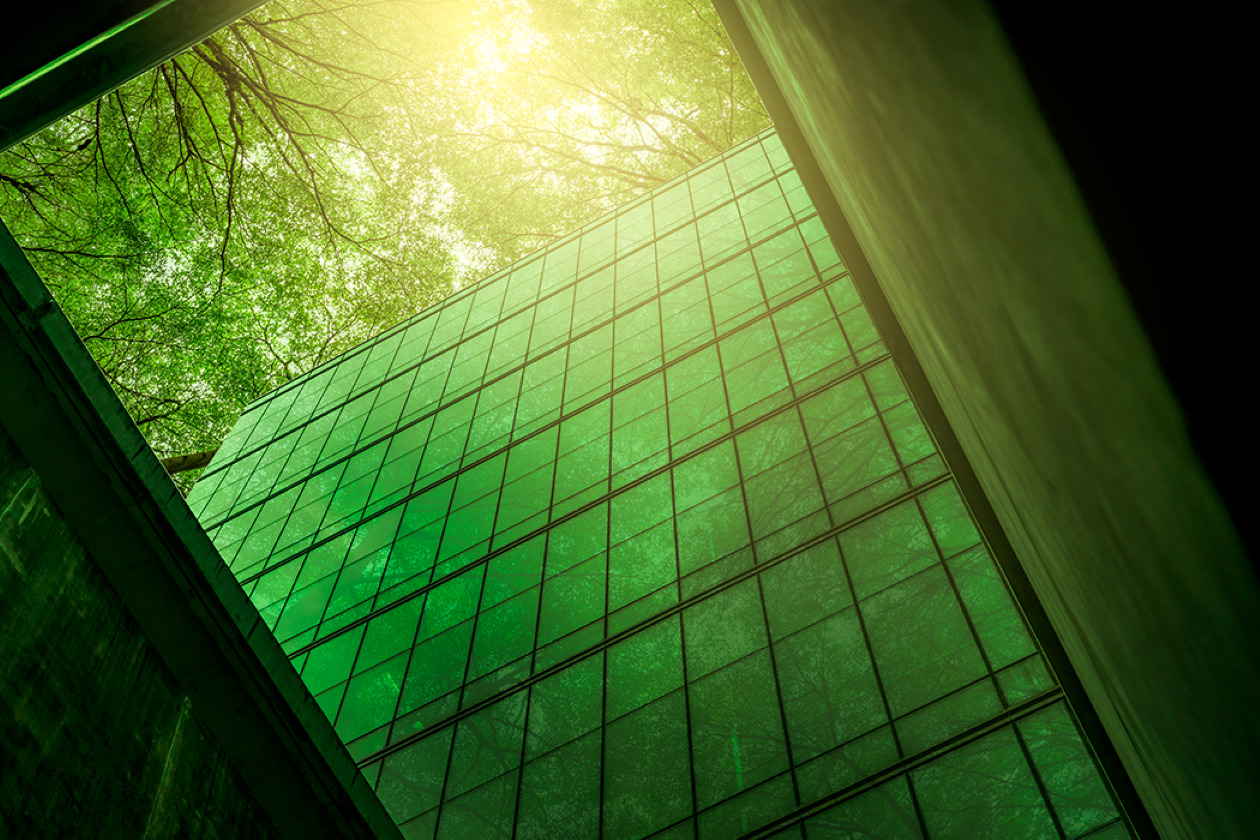Ali Flynn Shares Strategies for Net Zero Buildings
Sustainability Manager Ali Flynn was one of several sustainability experts who gave their insights on the future of decarbonizing buildings and strategies for achieving net zero status, in the Society of Office and Industrial Realtors quarterly newsletter.

John Robbins, SIOR, faces a daunting challenge. As principal and CEO of Carpenter Real Estate Inc., in San Ramon, Calif.—one of six companies with a General Services Administration (GSA) national broker contract—he oversees federal lease acquisition in the 18 Western states. In March, the GSA established a goal to restrict new lease agreements to net-zero buildings—by 2030.
The problem, says Robbins, is that few such buildings exist in North America. As of May 2022, the New Buildings Institute (NBI) had verified only 158 as zero-energy, and that total includes multifamily buildings as well as commercial. Furthermore, few of the verified commercial buildings have enough vacant space to meet GSA’s needs.
Fortunately for Robbins and his colleagues, net-zero buildings are slowly but surely gaining in popularity. NBI identifies 588 buildings as “emerging” toward the zero-energy standard. Meanwhile, sustainability is becoming an increasingly important criterion in decisions to purchase, finance, or occupy commercial buildings, contributing to demand.
Environmental experts applaud the trend but emphasize its necessity: According to the nonprofit organization Architecture 2030, the built environment generates almost half of global carbon emissions.
REDUCTION STRATEGIES
The statistic is concerning, but it is easier than you might expect to achieve net-zero standards, say several experts. “The biggest challenge with decarbonizing buildings isn’t the technology or the timeframes, but rather the mindset,” says Eleni Polychroniadou, commercial director of Sintali, an environmental verification body based in London. “We have this idea in our heads that net-zero offices and industrial buildings are these complex, luxury buildings that require a lot of effort and money to build. But they don’t have to be.”
The biggest challenge with decarbonizing buildings isn’t the technology or the timeframes, but rather the mindset.
George Miroshnikov, senior project manager, energy and sustainability services at JLL in New York City, emphasizes that creative approaches to construction of net-zero buildings entail only modest increases in budget and minor extensions to schedules. Furthermore, he points out that net-zero buildings save owners and tenants money on utility bills. Ali Flynn, sustainability manager at XL Construction, a general contractor in California, takes a similar view, observing that less operational energy equals less operational cost in the long term.
Net-zero retrofits to existing buildings are more complicated than ground-up construction, but far from impossible. The same overarching strategy applies. “The basic formula for net-zero is energy-efficiency plus renewables,” says Miroshnikov. To get there, he and other experts recommend electrification and the use of solar panels whenever possible (not every building is a viable candidate).
The basic formula for net-zero is energy-efficiency plus renewables.
Successful retrofits depend largely on improvements in energy efficiency. Robbins suggests that owners and occupants focus on air-handling, wastewater systems, better use of windows, and shading controls. Some techniques are even more basic. Tom Bencivengo, head of sustainable real estate for Lieef, a company that makes equity and credit investments in sustainable infrastructure and real estate projects, recommends some simple measures: “Close the shades and turn up the thermostat in the summer! Turn down the thermostat in the winter and open the south shades. Educate your management staff and focus on energy ‘awareness,’” he urges.
Recommendations extend to building materials and construction techniques, which represent “embodied carbon.” “If we use less materials, we lower carbon emissions significantly,” says Flynn, who welcomes the newfound interest in constructing buildings to last 100 years. She remarks, “If a building can serve many functions over a 100-year period without having to be completely gutted and remodeled every 10-30 years, then the embodied carbon of that space is reduced significantly.”
Companies unable to decrease their operational or embodied carbon can turn to offsets, which Conservation International defines as reductions “in greenhouse gas emissions to compensate for emissions made somewhere else.” Critics, however, view offsets as a form of “greenwashing.”
CARROTS AND STICKS
Whether offsets constitute greenwashing or not, new legislation is forcing building owners to adopt strategies beyond offsets. In January 2022, 33 state and local governments joined the Building Performance Standards (BPS) coalition, whose signatories have agreed to advance legislation or regulation of building performance by Earth Day 2024. Several of the signatories have already enacted stringent limitations on emissions. Examples include New York City’s Local Law 97, Boston’s BERDO, and San Francisco’s Green Building Code.
The prospect of fines is not the only motivator. Tenants adopting ambitious sustainability goals are putting pressure on asset owners, says Polychroniadou. For instance, tenants may set a policy to lease only in net-zero or green buildings. She also observes that sustainable buildings already command a “green premium,” meaning that they have higher valuations or the potential to attain higher rents. “Buildings that are not decarbonized will run the risk of becoming obsolescent,” she warns.
Nor are they likely to attract financing. As Polychroniadou notes, “Any company looking for finance, whether that is debt or equity, is now being scrutinized under ESG frameworks.” Such potential “hits to owners’ wallets” are what Bencivengo believes are among the best persuaders.
The pressure is likely to grow. In its 2021 report, Decarbonizing the Built Environment, JLL offered some striking statistics:
- 83% of investors have a dedicated person, team, or steering committee for ESG/sustainability strategies for their real estate investment holdings.
- 82% of investors are continually looking at ways to innovate or accelerate their sustainability initiatives.
- 89% of occupiers state that sustainability is increasingly important to their corporate strategy
ADVICE FOR BROKERS
Brokers who keep abreast of such developments can better counsel their clients. Robbins advises his peers to “dig through all the noise” and “understand the facts.” He also recommends that comprehensive analyses should underpin any leasing or investment decisions.
Role models abound. As Robbins has reported, the federal government is making great strides toward decarbonization. He also admires Prologis’s solar program. Flynn commends companies like Google, Meta, Johnson & Johnson, and Genentech, along with several public universities and community colleges.
If the carrots and sticks don’t sway property owners and tenants, then perhaps a wider perspective will. When it comes to decarbonization, Miroshnikov reminds us: “Some of it has to be done so that cities aren’t underwater in the future and there is still clean air and water for our children.”
Source: SIOR Foundation
Keep up to date with our latest news and industry insights.





